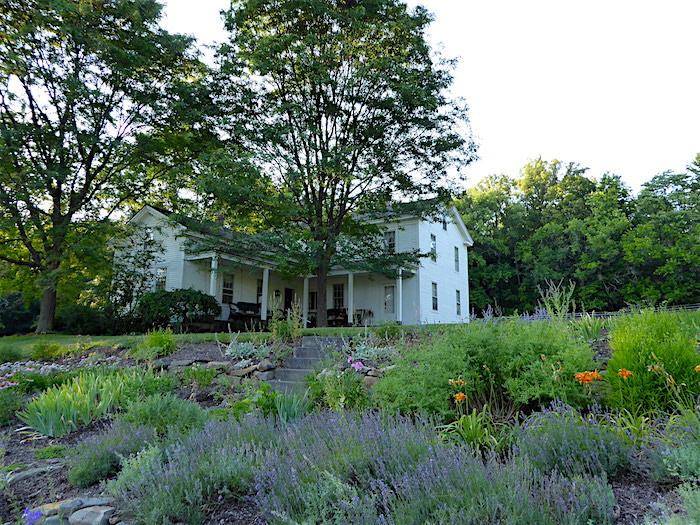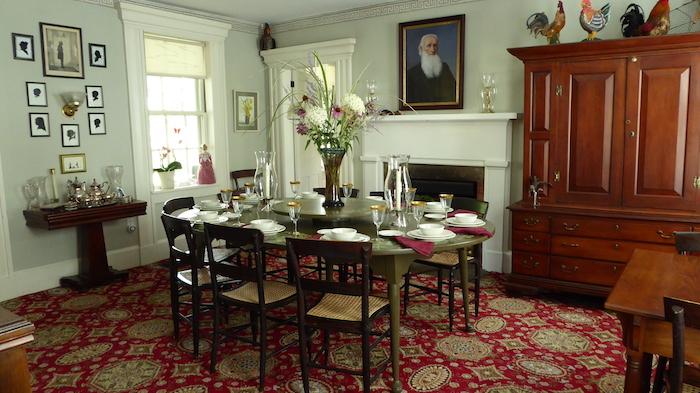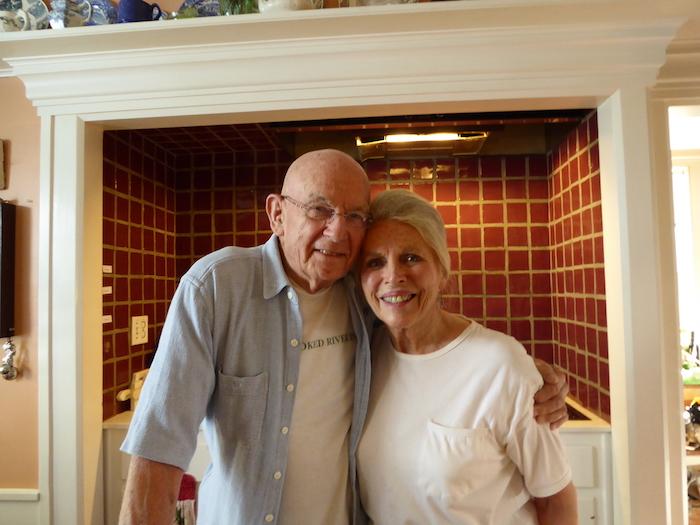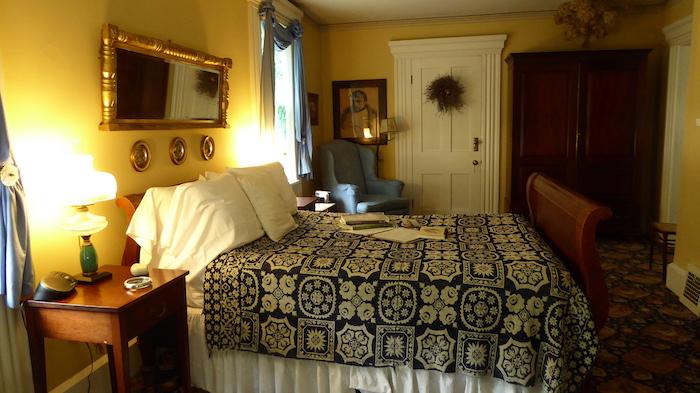
The Inn at Brandywine Falls at Cuyahoga Valley National Park/David and Kay Scott
When thinking about national park lodges, most of us visualize impressive rustic structures such as Yellowstone National Park’s Old Faithful Inn, Glacier National Park’s Many Glacier Hotel, or the Grand Canyon National Park’s El Tovar. These iconic lodges tend to garner most of the publicity and nearly all the personal pictures taken by travelers. Other national park lodges including Yellowstone’s Lake Hotel, Grand Teton’s Jackson Lake Lodge, and the Majestic Yosemite Hotel are not rustic in the manner of Old Faithful Inn, but they are certainly quite impressive.
The national parks also contain some unusual lodging facilities. Ross Lake Resort at North Cascades National Park in Washington state consists of a series of cabins attached to giant logs that float in the lake, while Lewis Mountain Cabins in Shenandoah National Park in Virginia is a small group of cabins once reserved for black travelers in the days of segregation. Grand Teton’s Triangle X Ranch is a dude ranch for people who love to ride horses in the midst of some of America’s most beautiful vistas.
The Inn at Brandywine Falls
However, the award for the most unique lodging facility in a national park may well belong to the Inn at Brandywine Falls at Cuyahoga Valley National Park in Ohio. The inn is certainly different from the national park lodges mentioned above. It doesn’t claim an impressive lobby, large dining room, or great surrounding vistas. However, it does possess some important attributes most of these other lodges often lack. The inn offers intimacy, quiet, and a kinship among fellow guests. Plus, you can walk a few steps from the house and pet a couple of friendly pigmy goats.
The inn has four guest rooms in a renovated pre-Civil War farmhouse, plus two loft suites in an adjacent carriage house. Two guest rooms in the house have one double bed, while the other two each have two double beds. The loft suites provide a king bed plus a Jacuzzi tub. Like any bed-and-breakfast worth its salt, the innkeepers offer their guests a warm welcome, a comfortable bed, an excellent breakfast, and some intellectual conversation around the breakfast table. These aren’t always available at most national park lodging facilities.
The inn serves as home to several animals including two pygmy goats, a whining cat named Brandywhiner, chickens, and a dog, currently the inn’s eighth, but now in loving hospice care. We found the goats friendly, but the cat a little standoffish. Chickens are chickens.
Renovating a Pre-Civil War Farmhouse
George and Katie Hoy became interested in operating a bed-and-breakfast following a trip to Ireland, during which they stayed in a number of private homes offering guest rooms. At the time they resided in the small Ohio community of Hudson near what was then Cuyahoga Valley National Recreation Area. The Hoys were members of the Hudson Heritage Association, whose mission is to preserve the historic character of their hometown, so historic renovation had been in their sights for some time.
During one of the association meetings, the superintendent of Cuyahoga Valley NRA discussed the Historic Properties Leasing Program. This caught the Hoys' attention, and they decided to follow up on a proposal for renovating a dilapidated pre-Civil War farmhouse situated in the national recreation area. One of their concerns of opening a bed-and-breakfast was attracting guests to a new facility. The task would be made easier at the farmhouse that had the advantage of being in a national park unit that had become a magnet for tourists.

The inn's dining room/David and Kay Scott
The couple obtained a loan of a quarter-million-dollars for the renovation, and the rest is history. The farmhouse at the time had a new roof but had been empty for six years, with no working plumbing or electricity. The Hoys contributed their own sweat equity and absorbed the expense of the renovation during the 14 months required to complete work on the house. The adjacent carriage barn was completed two years later.
The business arrangement for the leasing program is unlike most government concession contracts that require the concessionaire to share a portion of revenues with the government. Many of these contracts also require that the government pay a portion or all of the major repairs. With the Hoys' lease, the National Park Service proposal called for a 50-year-term, during which the innkeepers would be responsible for the entire cost of maintaining and operating the farmhouse. In return, the Hoys retain all revenue obtained from room rentals. Maintenance of a large pre-Civil War farmhouse can be expensive, as evidenced by a recent expenditure of $60,000 for a new roof. The Hoys live in the house and are required to pay “fair market” monthly rent to the National Park Service.
The Innkeepers
Innkeepers George and Katie Hoy have operated the Inn at Brandywine Falls for 28 years, an impressive record of longevity in a business in which the typical innkeeper perseveres for less than four years. Individuals who dream of operating their own bed-and-breakfast often underestimate the time and effort necessary to make this type venture a success. The hours can be long and the ability to get away for a vacation is limited, at least initially. One of the keys to maintaining a successful bed-and-breakfast is loyal employees. The Hoys said they require one full-time equivalent employee for each occupied guest room.

Innkeepers George and Katie Hoy/David and Kay Scott
The Hoys consider themselves not only in the lodging business, but also the entertainment business. They enjoy the company of their guests each evening when refreshments are served and each morning during a gourmet breakfast that can last one to two hours. Breakfast is a time when guests talk about their travels, their families, their interests, and their lives. As successful innkeepers, the Hoys feel the personal interaction at the morning breakfast is one of the most important memories their guests take home.
Being innkeepers at the farmhouse fulfilled a major goal of the Hoys: a desire to reside in a home where their four children could gather without being crowded, and their grandchildren would not be bored. The six guest rooms, each with their own bathroom, provide more than adequate accommodations for their children’s families when they visit, and Cuyahoga Valley National Park offers a multitude of activities to entertain the grandchildren. The innkeepers do take some time off for travel, usually in March, when business is relatively quiet. During these absences, the Hoys employ the services of inn sitters.
So, has the venture of spending a lot of money in order to operate a bed-and-breakfast in a national park proved successful? Considering the Hoys have been innkeepers for 28 years and married for 65 years, it seems the answer is yes.
The Park
Cuyahoga Valley National Park interprets the rich history and helps preserve the landscape along 22 miles of the U-shaped Cuyahoga River as it flows between Cleveland and Akron. The 33,000-acre park was created by Congress in 1974 as a national recreation area, with the designation changed in 2000 to national park. It appears the change in designation was primarily political because the park retains the qualities of similar urban units such as Golden Gate National Recreation Area clustered around San Francisco and Gateway National Recreation Area in the New York-New Jersey metropolitan area, rather than most of our national parks. This isn’t to belittle the park, because it is a genuine treasure, especially for people who live in the area.
The real jewel is the Ohio & Erie Canal and the canal towpath that parallels it through the length of the park. The park has more than 125 miles of trails for hiking, bicycling, horseback riding and, in winter, cross-country skiing. It also includes four public golf courses, a scenic railroad, a winter sports center, and small farms. The park’s visitor center is at Boston Store, a short distance north of the small community of Peninsula.

The James Wallace Parlour room on the first floor of the inn/David and Kay Scott



Comments
Loved seeing this. Beautiful.